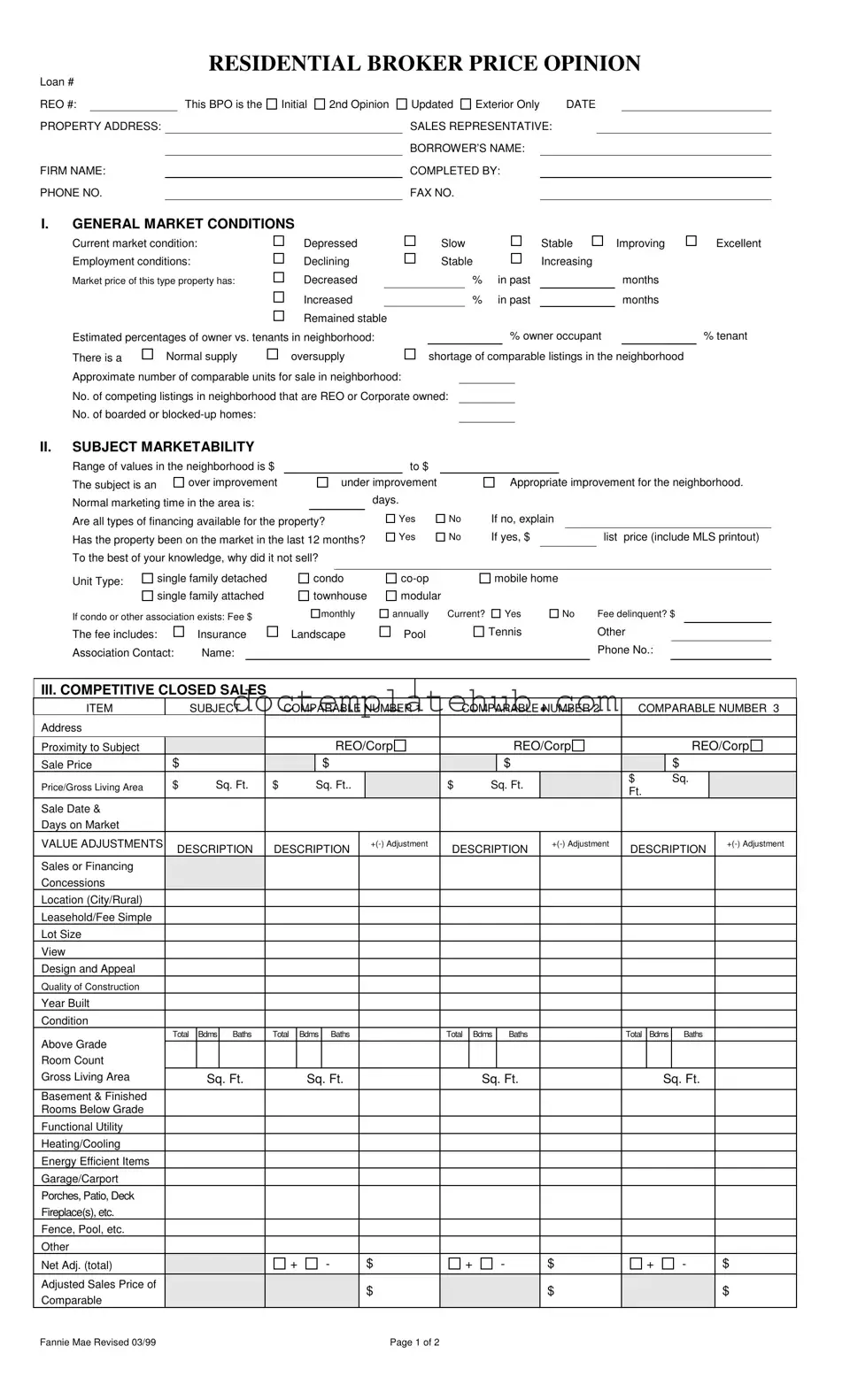What is a Broker Price Opinion (BPO)?
A Broker Price Opinion (BPO) is a professional assessment of a property's value, typically conducted by a licensed real estate broker or agent. It provides an estimate of the market value based on various factors, including recent sales data, current market conditions, and the property’s characteristics. BPOs are often used by lenders, banks, and investors to make informed decisions about real estate transactions.
When is a BPO needed?
A BPO may be required in several situations, such as when a lender needs to determine the value of a property for a mortgage application, during a foreclosure process, or when assessing the value of a property for sale. Additionally, real estate investors may seek a BPO to evaluate potential investment properties.
What information is included in a BPO form?
The BPO form includes essential details such as the property address, loan number, market conditions, comparable sales, and a marketing strategy. It also outlines necessary repairs, occupancy status, and competitive listings in the area. This comprehensive information helps provide an accurate assessment of the property's value.
How does a BPO differ from an appraisal?
While both a BPO and an appraisal aim to determine a property's value, they differ in their process and purpose. An appraisal is a more formal and detailed evaluation conducted by a licensed appraiser, often required by lenders for mortgage financing. In contrast, a BPO is typically less formal and quicker to complete, making it suitable for situations where a timely estimate is needed.
Who completes a BPO?
A BPO is completed by a licensed real estate broker or agent who has expertise in the local market. These professionals analyze market trends, comparable properties, and other relevant data to provide an accurate assessment of the property's value.
What factors influence the value determined in a BPO?
Several factors can influence the value determined in a BPO, including the condition of the property, location, recent sales of comparable properties, and current market trends. The BPO also considers the economic environment, such as employment rates and housing supply and demand.
How long does it take to complete a BPO?
The time required to complete a BPO can vary depending on the complexity of the property and the availability of data. Generally, a BPO can be completed within a few days to a week, making it a relatively quick process compared to a formal appraisal.
Can a BPO be used for legal purposes?
While a BPO can provide valuable insights into a property's value, it may not be considered legally binding like an appraisal. However, it can still be used as a supporting document in legal matters, such as disputes over property value or during foreclosure proceedings.
How often should a BPO be updated?
It is advisable to update a BPO regularly, especially in fluctuating markets. If the property has not sold within a specified timeframe or if significant changes occur in the market or property condition, a new BPO may be necessary to ensure an accurate valuation.
What should I do if I disagree with a BPO?
If you disagree with a BPO, you can request a second opinion or provide additional information that may affect the property's value. Engaging another qualified real estate professional to conduct a separate BPO or appraisal may also be beneficial in resolving discrepancies.
